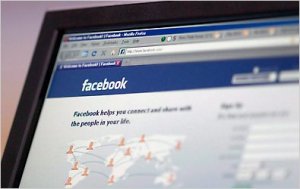 Facebook, the world’s largest social network, announced in July 2010 that it had 500 million users around the world. The company has grown at a meteoric pace, doubling in size since 2009 and pushing international competitors aside. Its policies, more than those of any other company, are helping to define standards for privacy in the Internet age.
Facebook, the world’s largest social network, announced in July 2010 that it had 500 million users around the world. The company has grown at a meteoric pace, doubling in size since 2009 and pushing international competitors aside. Its policies, more than those of any other company, are helping to define standards for privacy in the Internet age.
The company, founded in 2004 by a Harvard sophomore, Mark Zuckerberg, began life catering first to Harvard students and then to all high school and college students. It has since evolved into a broadly popular online destination used by both teenagers and adults of all ages. In country after country, Facebook is cementing itself as the leader and often displacing other social networks, much as it outflanked MySpace in the United States.
But it has also come to be seen as one of the new titans of the Internet, challenging even Google with a vision of a web tied together through personal relationships and recommendations, rather than by search algorithms. In a major expansion, Facebook has spread itself across other websites by offering members the chance to “Like” something — share it with their network — without leaving the web page they’re on.
In November 2010, Mr. Zuckerberg introduced Facebook Messages, a new unified messaging system that allows people to communicate with one another on the Web and on mobile phones regardless of whether they are using e-mail, text messages or online chat services.
In January, 2011, Facebook raised $500 million from Goldman Sachs and a Russian investor in a deal that values the company at $50 billion — more than companies like eBay, Yahoo and Time Warner. The stake by Goldman Sachs, considered one of Wall Street’s savviest investors, signals the increasing might of Facebook, which has already been bearing down on giants like Google.
But in a surprise move, Goldman said on Jan. 17 that it was limiting its offer to foreign clients because of worries that the deal could run afoul of securities regulations. The decision was considered a serious embarrassment for the bank, which had marketed the investment to its wealthiest clients, including corporate magnates and directors of the nation’s largest companies.
Mr. Zuckerberg had sought to keep close control over the company, spurning a $1 billion offer from Yahoo in 2006 and playing down the idea of a stock offering. But in the wake of the Goldman investment, Facebook said that it will begin reporting its financial results by April 2012, setting the stage for a likely IPO.
The company, based in Palo Alto, Calif., earned $355 million on $1.2 billion in revenue during the first nine months of 2010, according to a document prepared by Goldman for potential investors. That is up from $220 million in earnings on $770 million in sales in 2009.
Like other social networks, Facebook allows its users to create a profile page and forge online links with friends and acquaintances. It has distinguished itself from rivals, partly by imposing a spartan design ethos and limiting how users can change the appearance of their profile pages. That has cut down on visual clutter and threats like spam, which plague rivals. It has decisively outstripped other networks that preceded it, like MySpace and Friendster, becoming what many analysts see as the “default platform” of a new age of information organized around personal relationships.
Facebook built its lead not only through savvy design but rapid deployment of features that allowed the content created by users to multiply the site’s appeal. In May 2007, Facebook unveiled an initiative called Facebook Platform, inviting third-party software makers to create programs for the service and to make money on advertising alongside them. The announcement stimulated the creation of hundreds of new features or “social applications” on Facebook, from games to new music and photo sharing tools, which had the effect of further turbo-charging activity on the site.
Facebook Messages is a bold move by Facebook to expand from a social network into a full-fledged communications system. It could help the company chip away even more at Internet portals likeGoogle, Yahoo, MSN and AOL, which have used e-mail as one of their main draws with consumers.
In addition to channeling all e-mails, text messages and chats through a single point, Facebook Messages will offer users what Mr. Zuckerberg called a “social in-box” that will prioritize messages from friends and close acquaintances, potentially saving time. The company faces a number of challenges, however, like managing spam, getting users to change ingrained habits and persuading some to entrust their confidential e-mail to a company whose privacy practices have often drawn scrutiny.
Disputed Origins
Facebook’s rise has been marked by strings of controversies. Three other Harvard students maintain that they came up with the original idea and that Mr. Zuckerberg, whom they had hired to write code for the site, stole the idea to create Facebook. Facebook has denied the allegations. A long-running lawsuit is pending. Another Harvard classmate, Aaron Greenspan, claims that he created the underlying architecture for both companies, but has declined to enter the legal battle.
A movie about Facebook’s tumultuous origins, “The Social Network,” offers up what A.O. Scott called “a creation story for the digital age and something of a morality tale, one driven by desire, marked by triumph, tainted by betrayal and inspired by the new gospel: the geek shall inherit the earth.”
Facebook has strenuously, and Mr. Zuckerberg more quietly, asserted that the portrayal of the company’s founding is fiction. And Mr. Zuckerberg disputed the characterization of him in the film, though in a New Yorker magazine profile, he acknowledged having indulged in a bit of sophomoric arrogance.
Privacy Concerns
The back and forth between Facebook and its users over privacy is gaining importance as the company’s growth continues unabated. Facebook’s policies, more than those of any other company, are helping to define standards for privacy in the Internet age.
Bowing to pressure over privacy concerns, the company in May 2010 unveiled a set of controls that he said would help people understand what they were sharing online, and with whom.
Facebook’s biggest mistake, Mr. Zuckerman said, had been in failing to notice that as Facebook added new features and its privacy controls grew increasingly complicated, those controls became effectively unusable for many people.
In October 2010, Facebook acknowledged that some applications on its site, including the popular game FarmVille, had improperly shared identifying information about users, and in some cases their friends, with advertisers and Web tracking companies. The company said it was talking to application developers about how they handled personal information, and was looking at ways to prevent this from happening again.
The Goldman Deal
In January 2011, Facebook raised $500 million from Goldman Sachs and a Russian investor in a transaction that values the company at $50 billion. As part of the deal with Facebook, the bank could raise as much as $1.5 billion from investors for Facebook.
The new money will give Facebook more firepower to steal away valuable employees, develop new products and possibly pursue acquisitions — all without being a publicly traded company. The investment may also allow earlier shareholders, including Facebook employees, to cash out at least some of their stakes.
The new investment came as the Securities and Exchange Commission has begun an inquiry into the increasingly hot private market for shares in Internet companies, including Facebook, Twitter, the gaming site Zynga and LinkedIn, an online professional networking site. Some experts suggest the inquiry is focused on whether certain companies are improperly using the private market to get around public disclosure requirements.
On Jan. 17, catching many off guard, Goldman said that it would limit its Facebook offering to foreign investors, excluding clients in the United States because of worries that the deal could run afoul of securities.
The offering to high-net-worth clients was supposed to have been a triumph for the firm, not the serious embarrassment it became. Goldman has been trying to move past run-ins with regulators, including a $550 million settlement with the Securities and Exchange Commission in 2010 over a complex mortgage investment. The Facebook plan will likely raise new questions about whether Goldman tried to push regulatory boundaries once again.
Copyright 2011 by The New York Times




 Jan. 31: Comeback Player of the Year
Jan. 31: Comeback Player of the Year